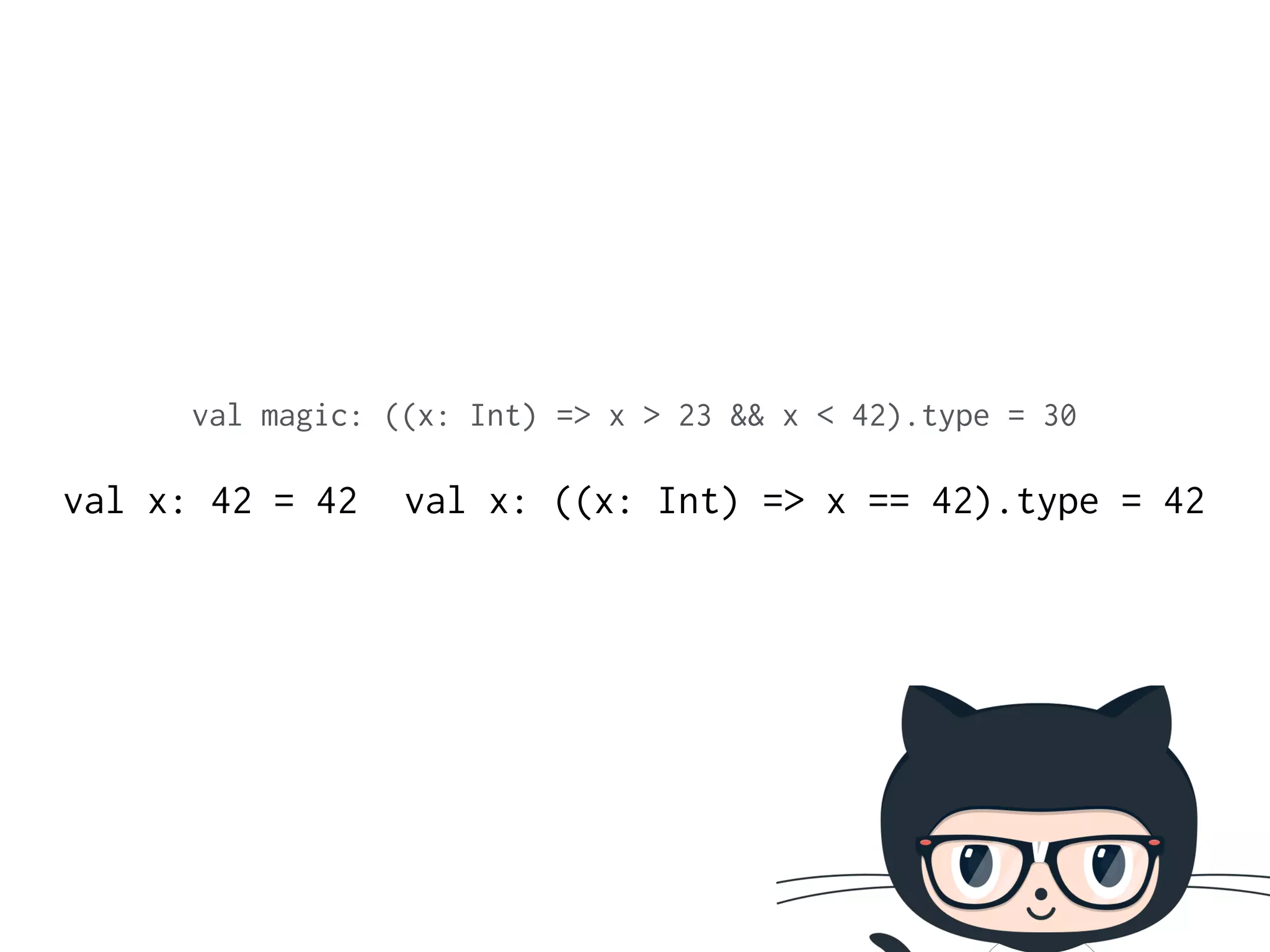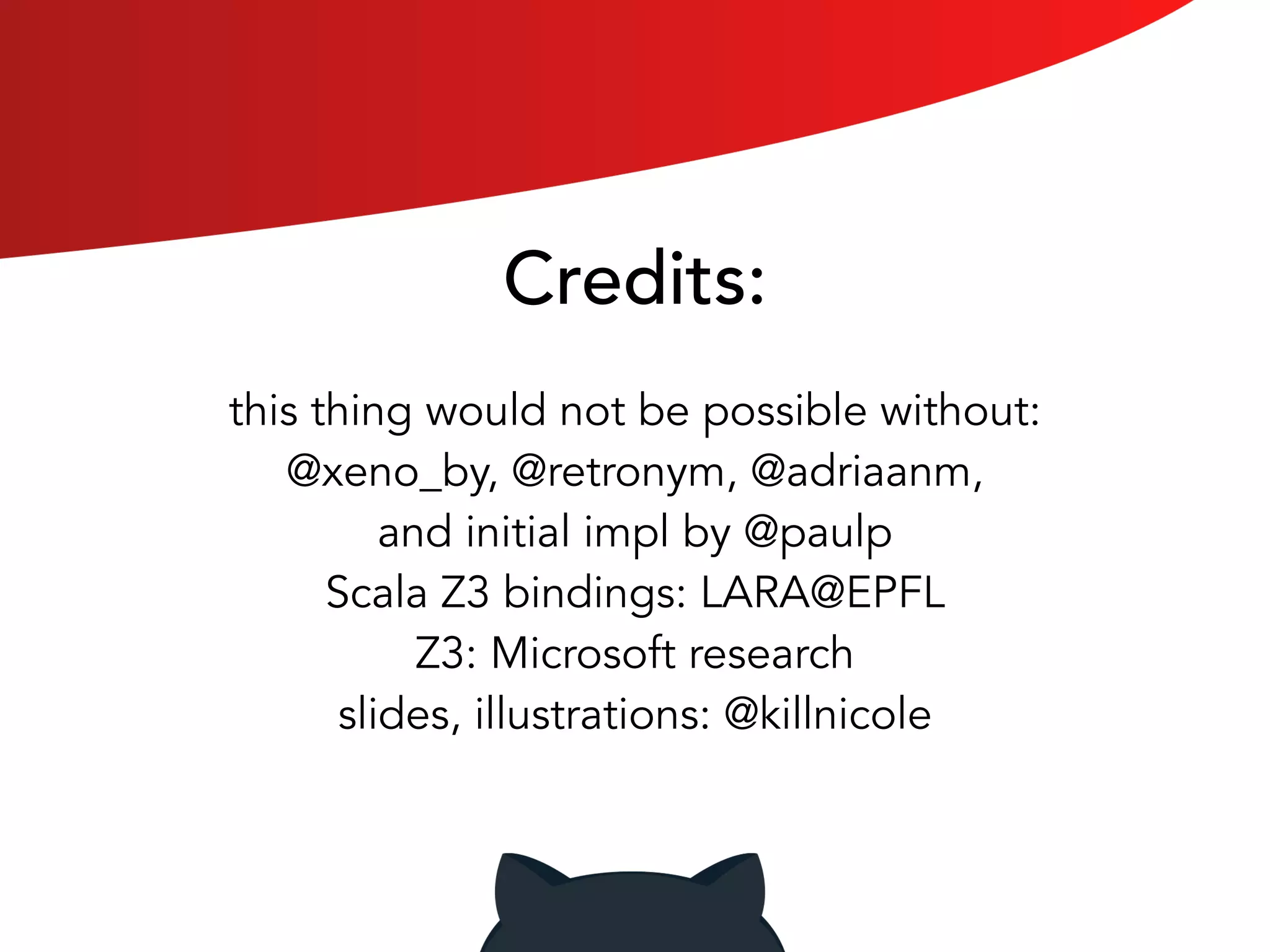The document discusses literal-based singleton types in Scala. Some key points:
1. Literal-based singleton types allow types like "panda!".type and 42.type, treating literals as singleton types. This enables more consistency in Scala type systems.
2. Examples are provided showing how literal-based singleton types can be used for records, residues, and ranged values.
3. The document discusses how literal-based singleton types could improve dependent types in Scala by enabling types like ((x: Int) => x > 23 && x < 42).type. This may allow integration with SMT solvers like Z3 for compile-time checking of dependent types.
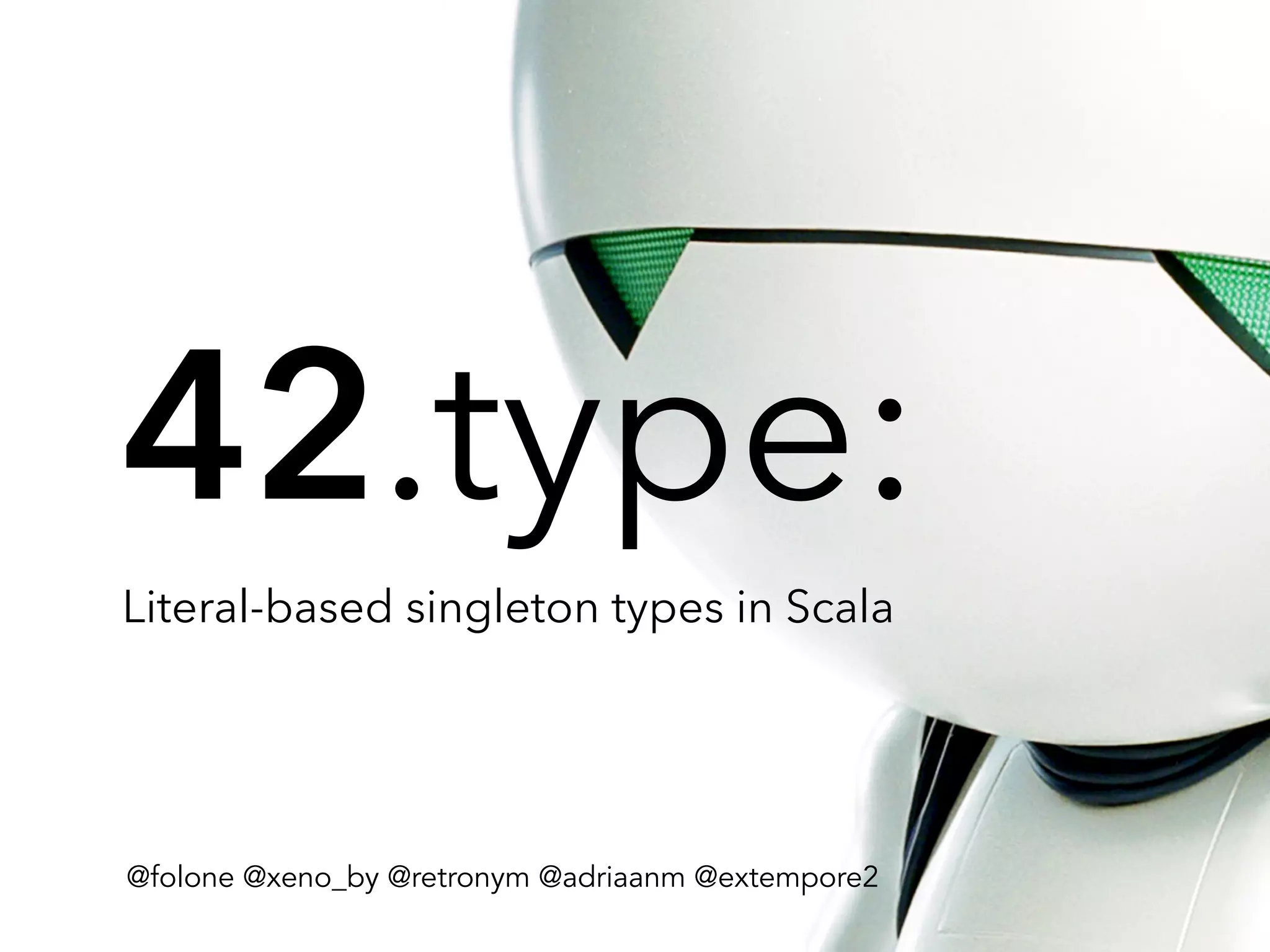




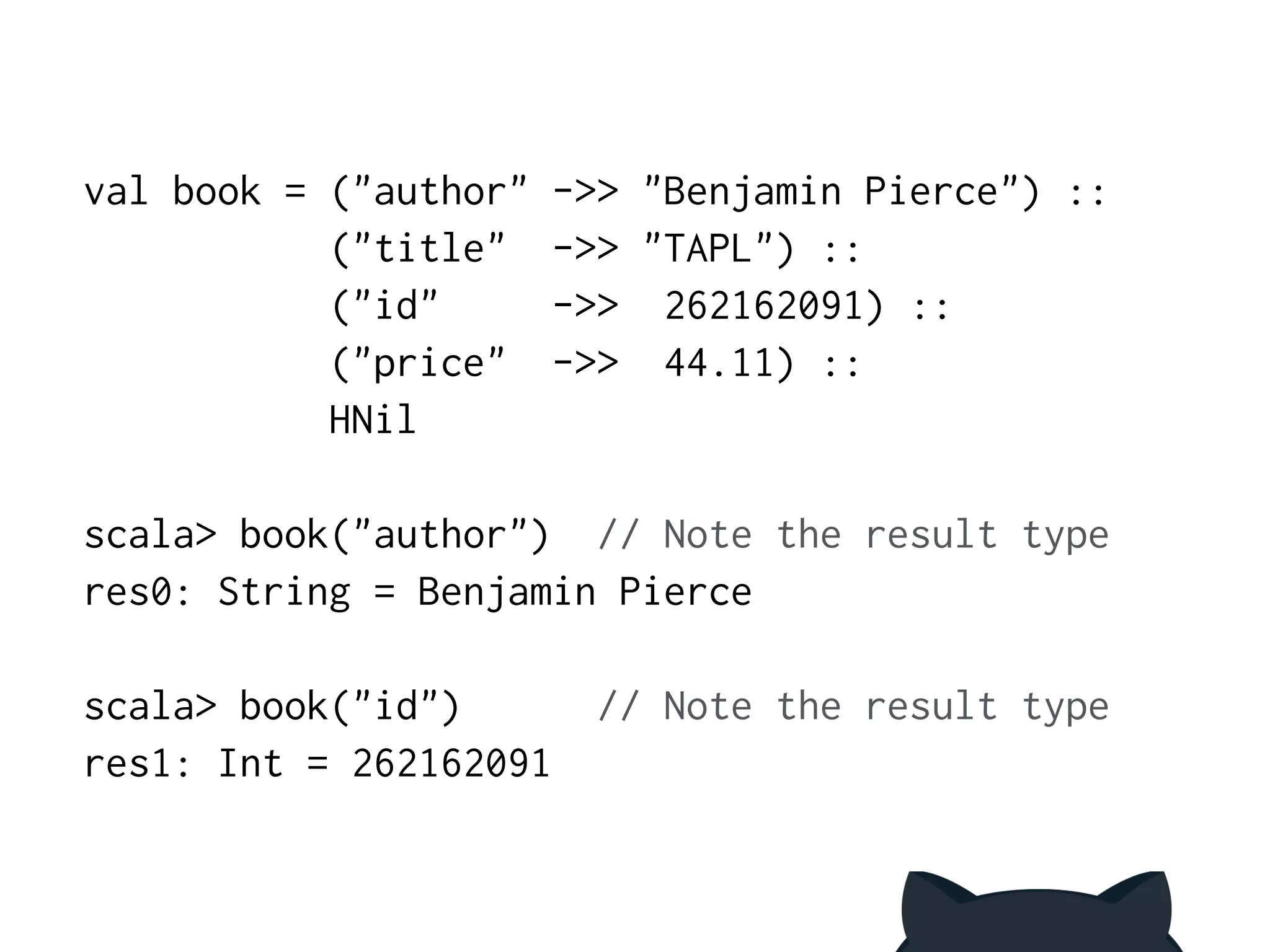
![trait Assoc[K] { type V ; val v: V }
defined trait Assoc
!
def mkAssoc[K, V0](k: K,v0: V0):
Assoc[k.type] { type V = V0 } =
new Assoc[k.type] {type V = V0 ; val v = v0}
mkAssoc: [K, V0](k: K, v: V0)Assoc[k.type]{type V = V0}
!
def lookup[K](k: K)
(implicit a: Assoc[k.type]): a.V = a.v
lookup: [K](k: K)(implicit assoc: Assoc[k.type])assoc.V](https://image.slidesharecdn.com/42-140910141959-phpapp02/75/42-type-Literal-based-Singleton-types-7-2048.jpg)
![> implicit def firstAssoc = mkAssoc(1, "Panda!")
firstAssoc: Assoc[1.type]{type V = String}
!
> implicit def ageAssoc = mkAssoc("Age", 3)
ageAssoc: Assoc["Age".type]{type V = Int}
!
> implicit def nmAssoc = mkAssoc(“Name", “Jane”)
nmAssoc: Assoc["Name".type]{type V = String}
scala> lookup(1)
res0: String = Panda!
scala> lookup("Age")
res1: Int = 3
scala> lookup("Name")
res2: String = Jane](https://image.slidesharecdn.com/42-140910141959-phpapp02/75/42-type-Literal-based-Singleton-types-8-2048.jpg)
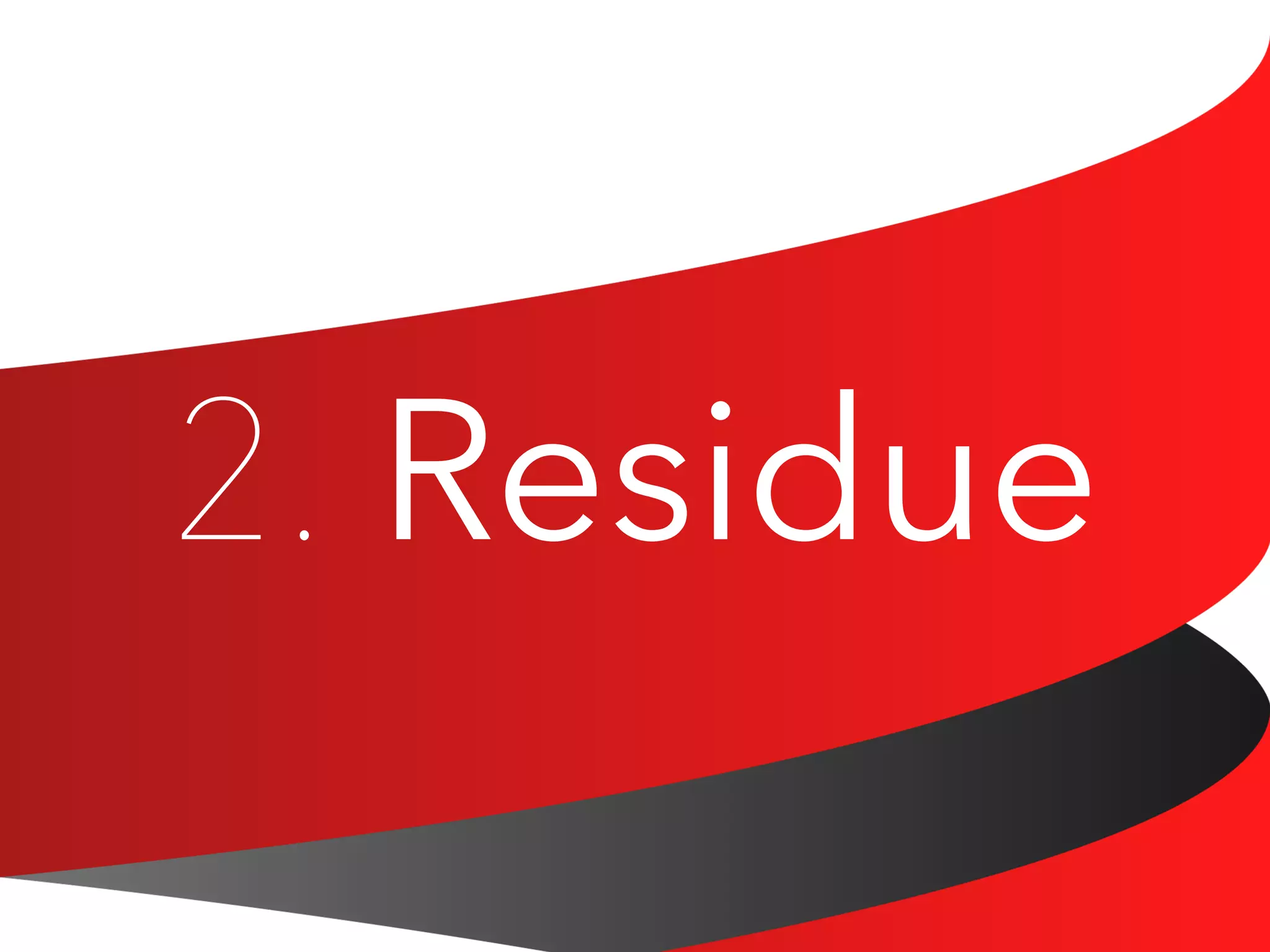
{
lhs =>
def +(rhs: Residue[N]): Residue[N] =
Residue((lhs.n + rhs.n) % inhabitant[N])
}](https://image.slidesharecdn.com/42-140910141959-phpapp02/75/42-type-Literal-based-Singleton-types-10-2048.jpg)
 + Residue[13](20)
<console>:10: error: type mismatch;
found : Residue[13.type]
required: Residue[15.type]
Residue[15](15) + Residue[13](20)
^
scala> Residue[13](15) + Residue[13](20)
res1: Residue[13.type] = Residue(9)](https://image.slidesharecdn.com/42-140910141959-phpapp02/75/42-type-Literal-based-Singleton-types-11-2048.jpg)

![class Ranged[From <: Int : SingleInhabitant,
To <: Int : SingleInhabitant] {
def sample = {
val rnd = new scala.util.Random
val from = inhabitant[From]
val to = inhabitant[To]
(from + rnd.nextInt(to - from + 1))
}
}](https://image.slidesharecdn.com/42-140910141959-phpapp02/75/42-type-Literal-based-Singleton-types-13-2048.jpg)
![scala> val range = new Ranged[10, 20]
range: Ranged[10.type,20.type] =
Ranged@78c22d25
!
scala> range.sample
res0: Int = 13
!
scala> range.sample
res1: Int = 11](https://image.slidesharecdn.com/42-140910141959-phpapp02/75/42-type-Literal-based-Singleton-types-14-2048.jpg)

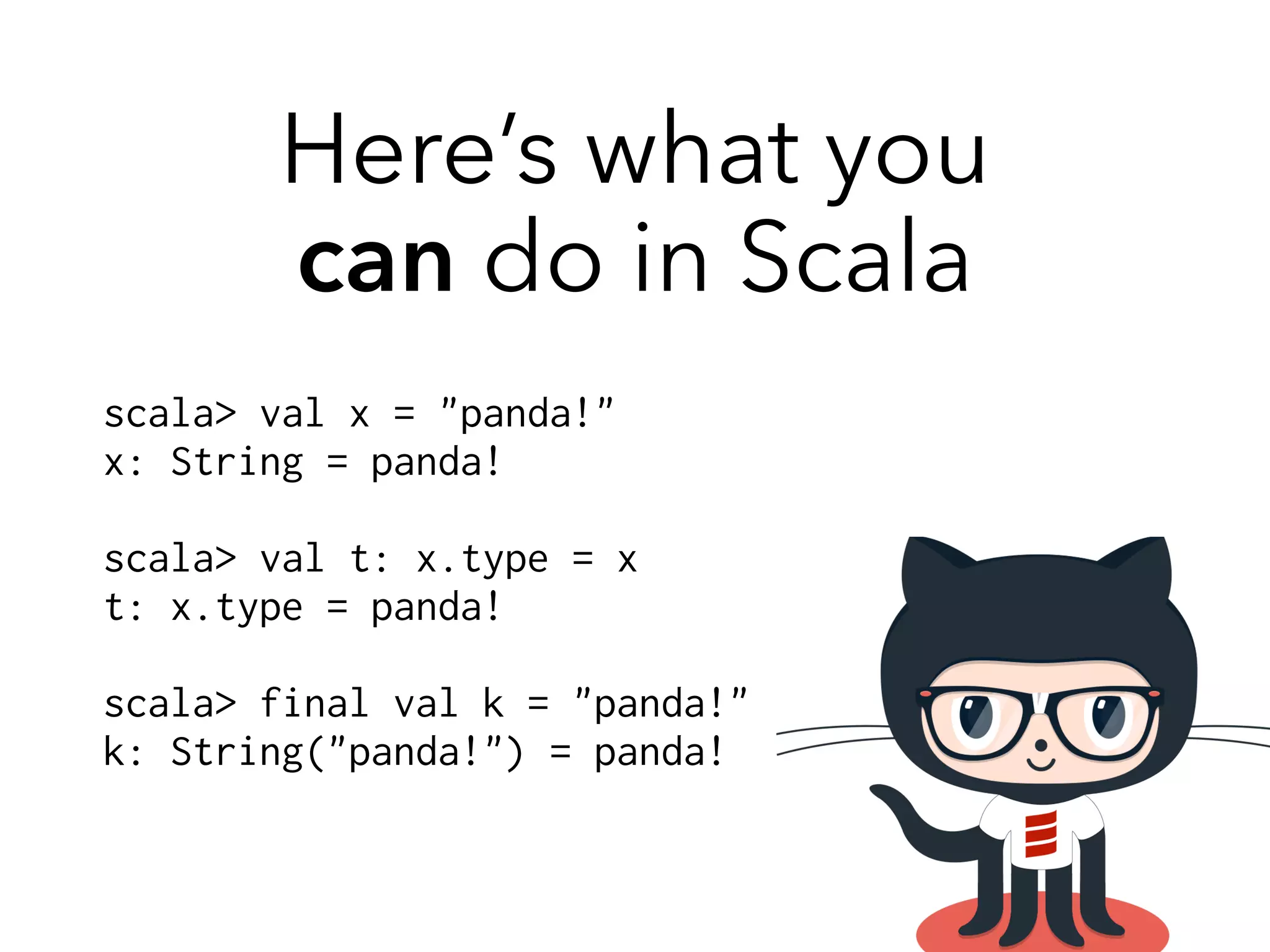
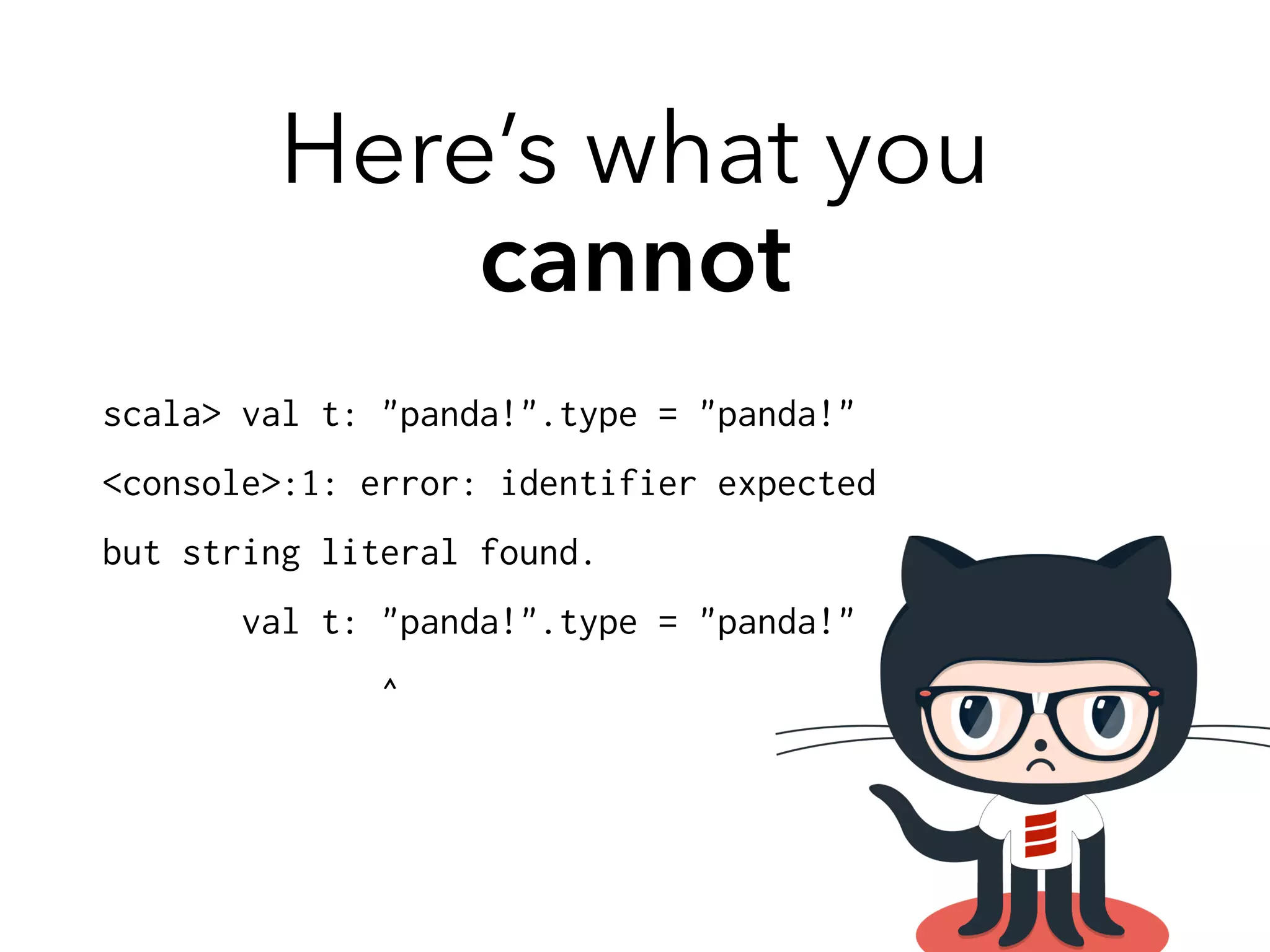
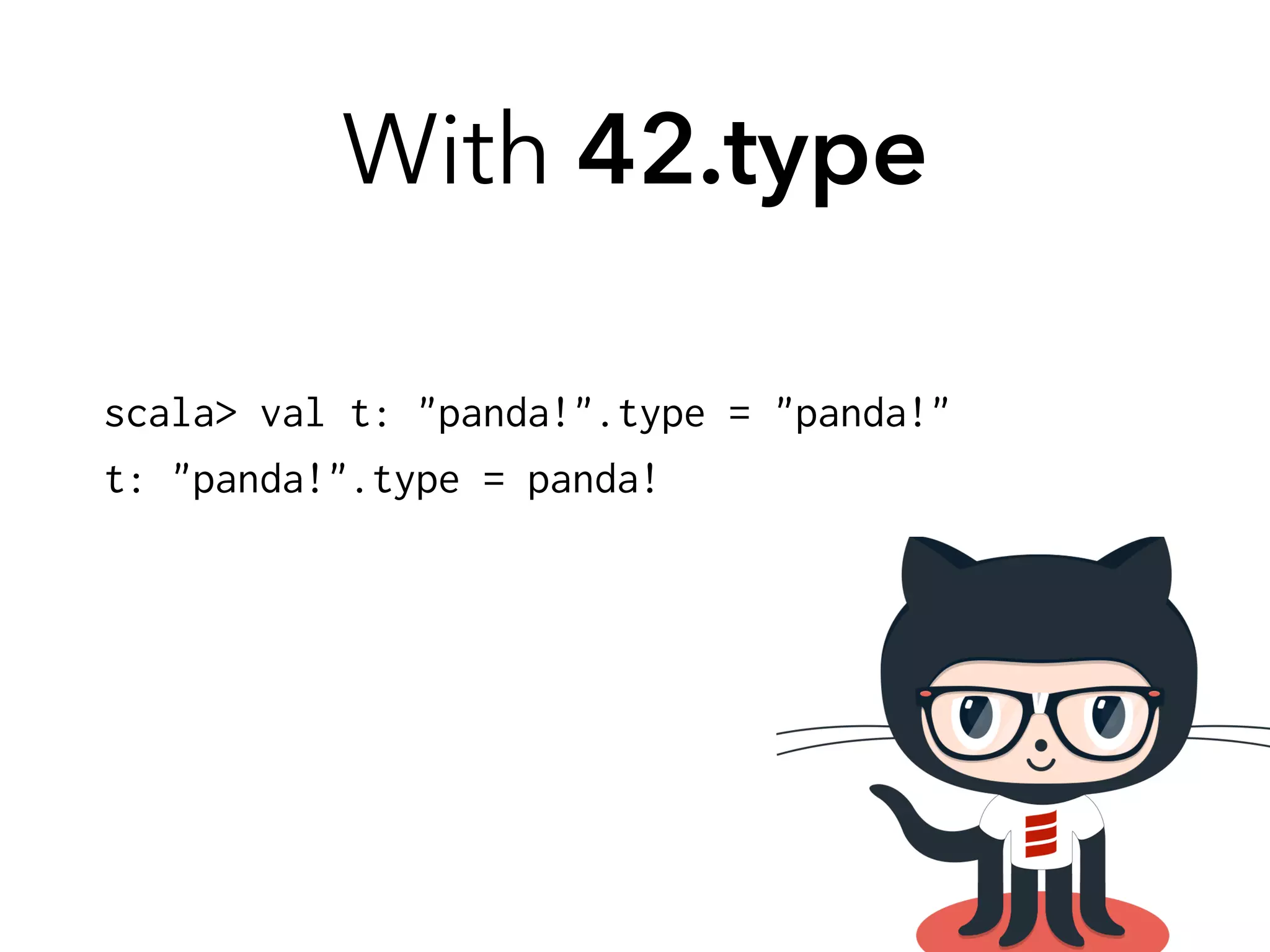


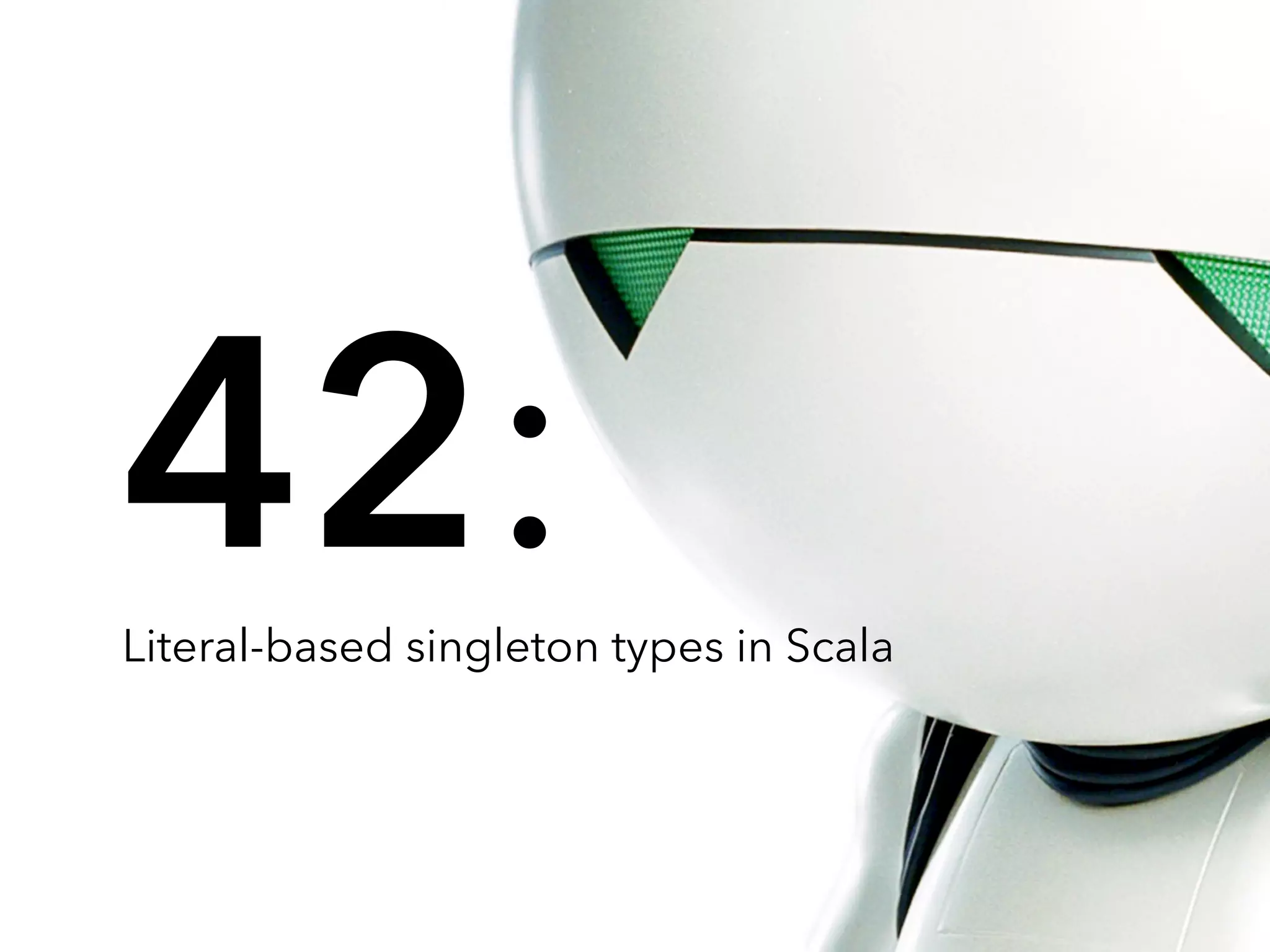
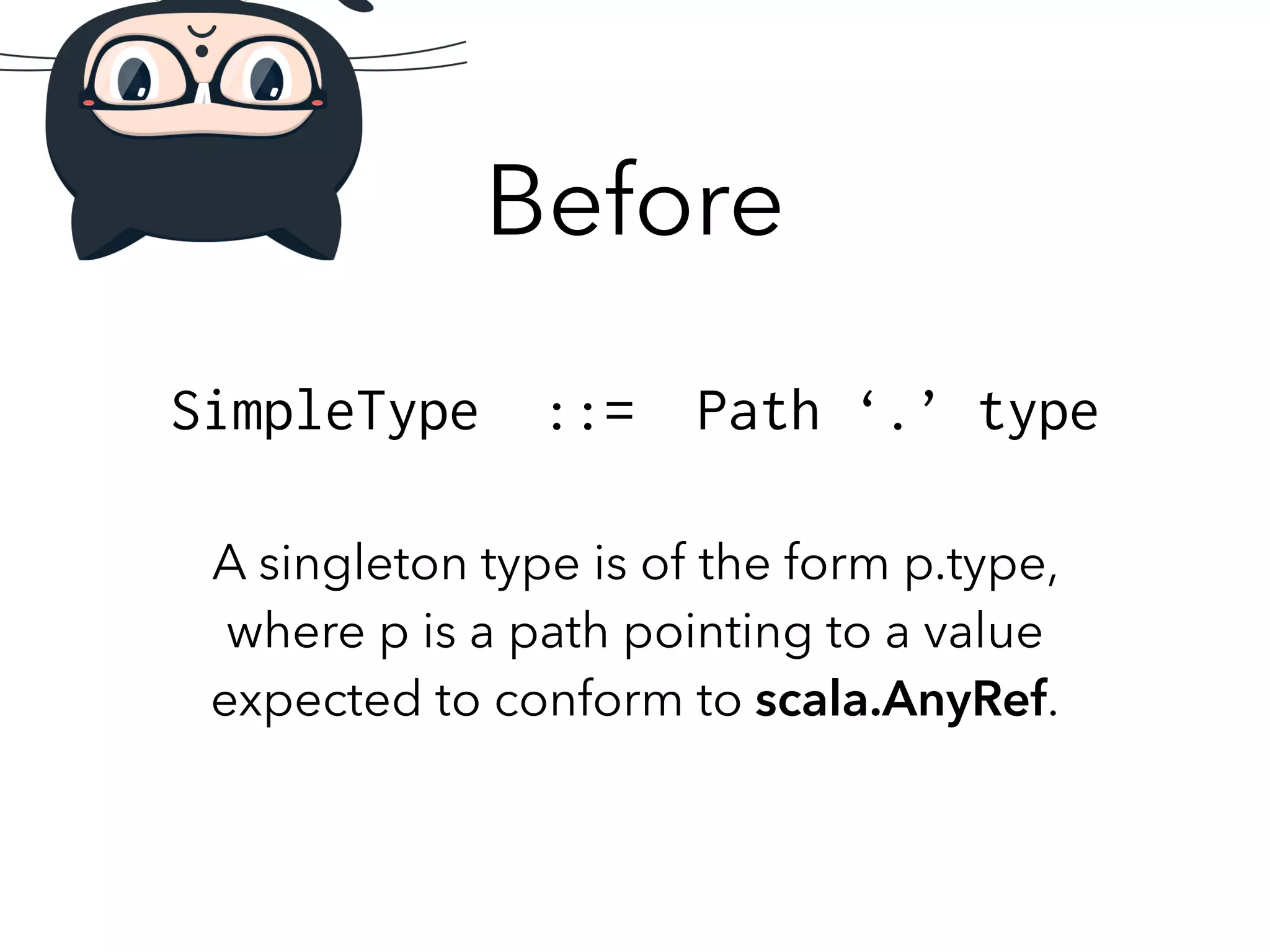
![After
SimpleType ::= Path ‘.’ type
| Literal [‘.’ type]](https://image.slidesharecdn.com/42-140910141959-phpapp02/75/42-type-Literal-based-Singleton-types-23-2048.jpg)

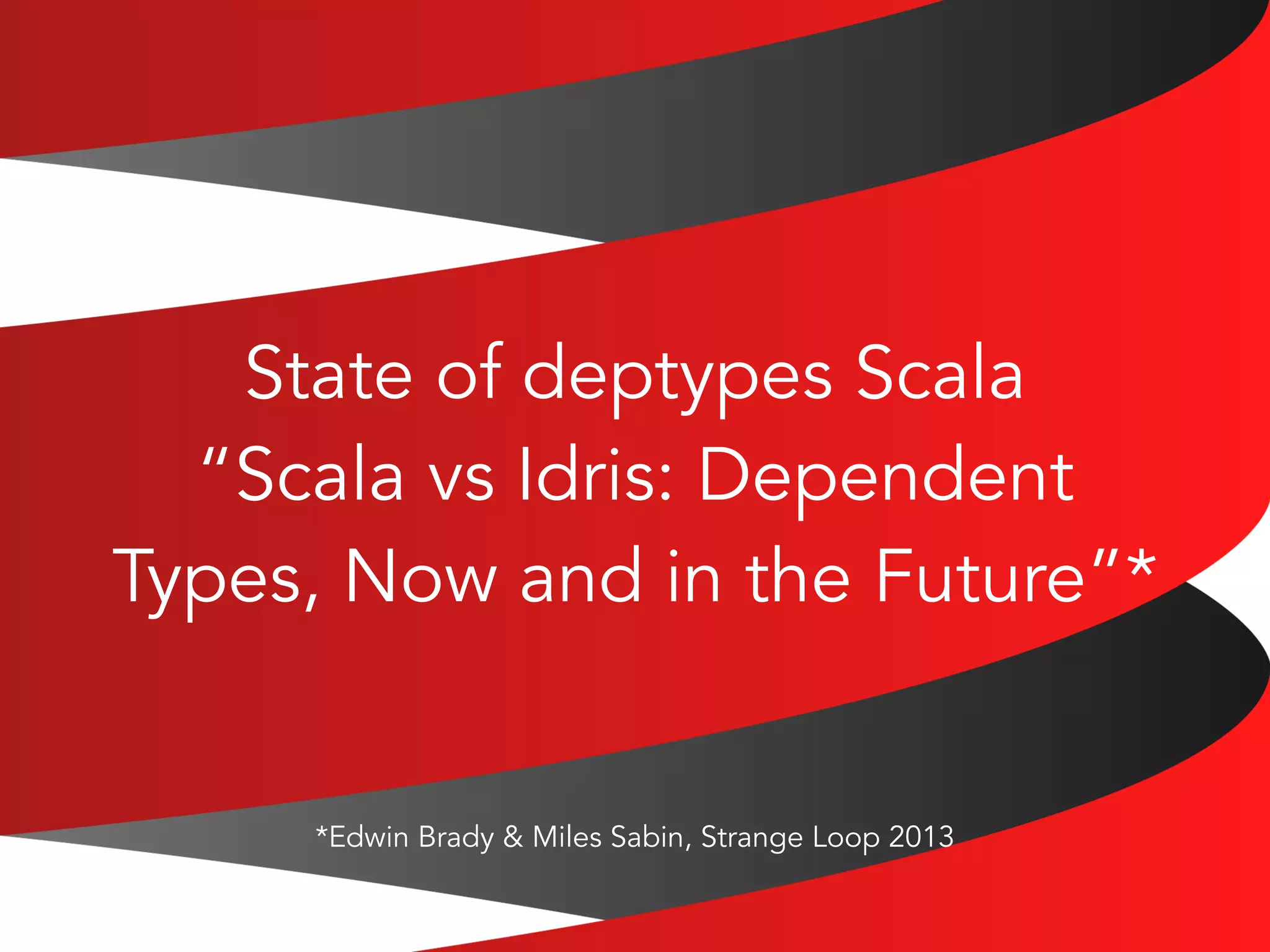

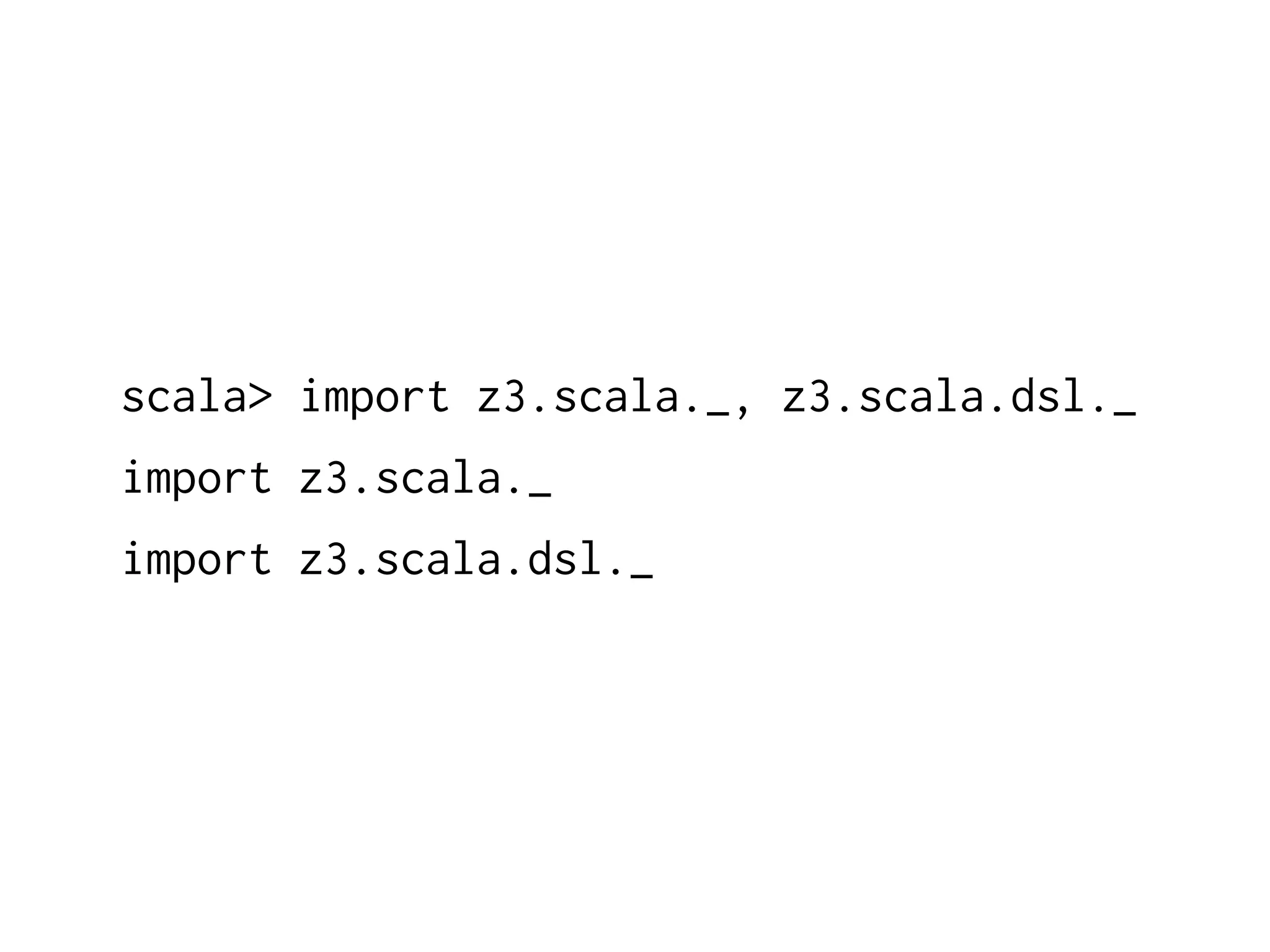
![scala> findAll((x: Val[Int]) => x > 23 && x < 42).toList
res0: List[Int] = List(24, 25, 26, 27, 28, 29, 30, 31,
32, 33, 34, 35, 36, 37, 38, 39, 40, 41)](https://image.slidesharecdn.com/42-140910141959-phpapp02/75/42-type-Literal-based-Singleton-types-28-2048.jpg)
![((x: Val[Int]) => x > 23 && x < 42)](https://image.slidesharecdn.com/42-140910141959-phpapp02/75/42-type-Literal-based-Singleton-types-29-2048.jpg)



